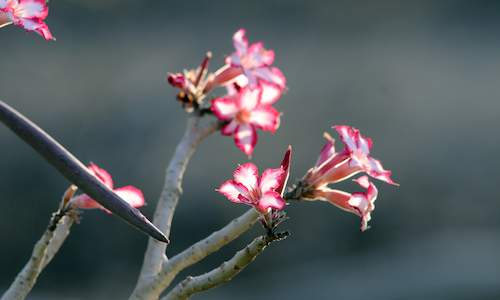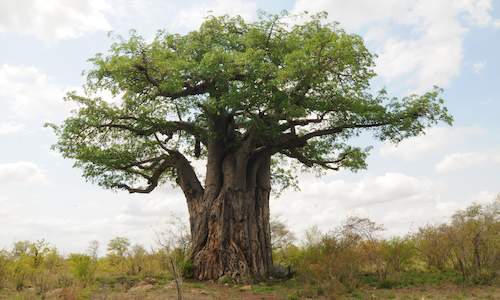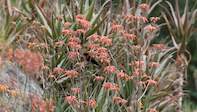The Ecology of Kruger National Park
Find out how the ecology of the Kruger Park governs the variation of flora and hence the grazing patterns of browsers, and ultimately the behavior of predators.
The
bed of the Mphongolo River in northern Kruger is framed by a tall apple-leaf, while flowering knobthorns add a colourful backdrop. Many African people regard the apple-leaf as a rain tree; when sap-sucking aphids pierce its bark, they eject almost pure water that drips down to form a wet patch on the ground.
Sunset over
the Sabie River, one of the most important rivers in the Kruger Park. The Sabie, at one time the northern boundary of the original Sabi Game Reserve, flows across the Park for 104 kilometres before entering Mozambique through a rocky gorge in the Lebombo range.
Rooibosrant Dam, near Bateleur Bushveld Camp, is one of the prettiest in the Park, and an ideal place for watching waterbirds such as whitefaced whistling ducks.
Drowned leadwoods (Combretum imberbe), in the far distance, can remain in the water for many years as their wood is especially fine grained and very heavy, weighing 1 200 kilograms per cubic metre.
The central plains below
Nkumbe Mountain, as the rising sun casts its tinted rays across a fever tree. The clay soils of this region, underpinned by basalt, support large concentrations of zebra and wildebeest. The lookout at Nkumbe, 94 metres above the plain, provides one of the finest panoramas to spot herds of Zebra and Wildebeest.
Shaded by a fever tree (Acacia xanthophloea) a pool in the Mphongolo River in northern Kruger is a valuable source of water in a region where permanent water is scarce.
In the surrounding semi-arid mopaneveld, rainfall is erratic and seldom exceeds 450 millimetres a year. In the nineteenth century, the tree's conspicuous yellow bark served as a beacon indicating the presence of water to thirsty travellers. However, as malaria-carrying mosquitoes favoured the same habitat, the fevers that the disease brought on were incorrectly blamed on the tree.
The
blue water lily has a submerged rhizome that roots in the muddy floor of quiet streams and ponds, where the plant provides a protective environment for water insects, frogs and young fish.
A
knobthorn flowers above a small stream - near Olifants Camp - that holds water for a few months into winter. This miniature aquatic ecosystem is a haven for waterbirds, foam-nest frogs and dragonflies, while birds such as black crake and painted snipe favour the dense vegetation along the stream bank.
By Nigel Dennis & Michael Brett.
African flowers guide to wild flowers found in Kruger National Park and South Africa. This flower guide includes descriptions, images and th...
more
African trees guide to tree species in the Kruger National Park and South Africa. This Africa Tree Guide includes descriptive information, i...
more








 African flowers guide to wild flowers found in Kruger National Park and South Africa. This flower guide includes descriptions, images and th...
African flowers guide to wild flowers found in Kruger National Park and South Africa. This flower guide includes descriptions, images and th... African trees guide to tree species in the Kruger National Park and South Africa. This Africa Tree Guide includes descriptive information, i...
African trees guide to tree species in the Kruger National Park and South Africa. This Africa Tree Guide includes descriptive information, i...